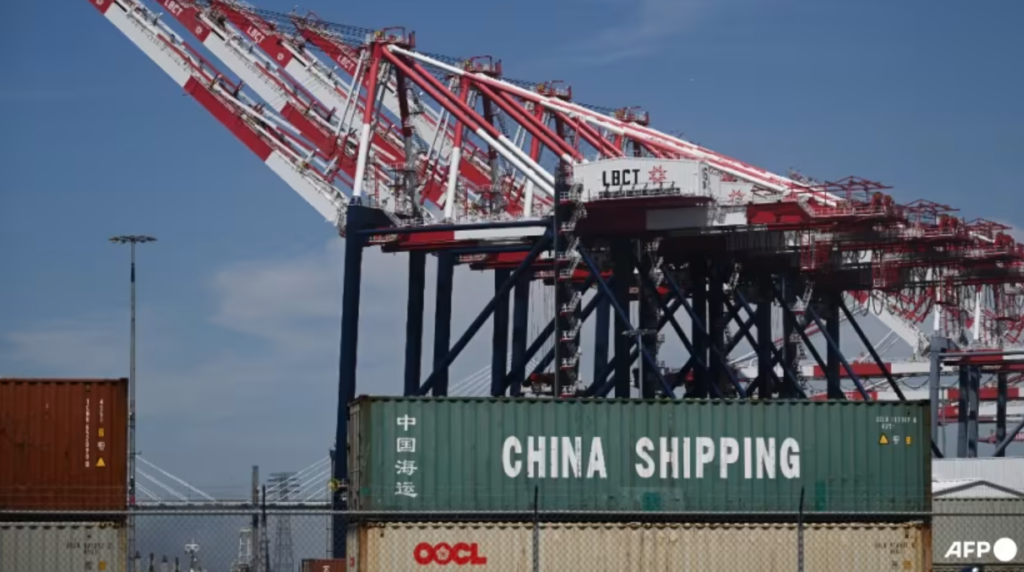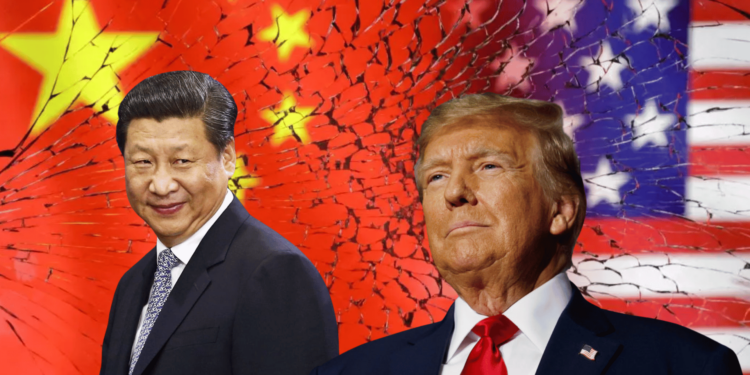- China raised tariffs on U.S. goods to 125%, calling Trump’s trade strategy “a joke” and vowing to fight back in other ways.
- Both countries now tax 100% of each other’s goods, pushing U.S.-China trade to the brink of collapse.
- Beijing is shifting focus to building alliances, restarting talks with the EU and engaging Southeast Asian partners.
China just turned up the heat in the trade war, slapping a 125% tariff on U.S. goods Friday—its sharpest response yet to President Trump’s recent move to single Beijing out for higher duties. And China’s message? They’re not amused.
Markets had been holding their breath since Trump’s surprise midweek announcement: a 145% tariff on Chinese imports, alongside a 90-day tariff pause for dozens of other countries. On Thursday, the yuan briefly fell to levels not seen since the 2008 financial crash—though it clawed back a bit Friday.
China’s Finance Ministry didn’t mince words, saying the U.S. tariffs “violate international trade rules,” go against economic logic, and amount to “unilateral bullying.” Basically, they’re not playing ball.
Analysts are warning that these tit-for-tat tariffs, now well beyond 35%, could wipe out profit margins and make trade between the two giants pretty much impossible. Both sides are now taxing all of each other’s goods—yep, 100%.
Beijing also hinted this would be their final tit-for-tat move. “Even if the U.S. keeps hiking tariffs, it won’t matter—it’ll go down as a bad joke in global economic history,” the Finance Ministry said. Still, they left the door open for other types of retaliation. And they’re not backing down.
Already, China has begun pulling other levers—starting with a clampdown on Hollywood films and issuing a travel advisory for Chinese citizens heading to the U.S., particularly Ohio. Earlier this week, they also discouraged students from studying in the U.S.
UBS analysts noted that Beijing’s decision not to match any future tariff hikes is basically admitting that trade between the two countries is now “completely severed.”
Tariffs Everywhere, Talks Nowhere?
Since April 9, China raised the portion of U.S. trade subject to tariffs from 63% to 100%. On the U.S. side, that figure rose to 67% back in February. And now? The average U.S. tariff on Chinese goods is hovering around 135%, according to the Peterson Institute—forty times what it was before this trade war started back in 2018.
China Courts the World
While slamming the U.S., China is looking to rally allies. In a meeting with Spanish PM Pedro Sanchez, President Xi Jinping said the EU and China should work together to “oppose unilateral acts of bullying.”
Xi’s about to kick off a tour across Southeast Asia, where trade—especially in agriculture—will be top of mind. “China’s best offer to Vietnam right now is stability,” said Eric Orlander of the China-Global South Project. “And at a time like this, that’s huge.”

Commerce Minister Wang Wentao, meanwhile, has been busy working the phones—chatting with folks from the EU, Malaysia (this year’s ASEAN chair), Saudi Arabia, and South Africa. It’s a clear effort to get ahead of the U.S. and deepen ties with both Gulf countries and BRICS.
China and the EU also agreed Thursday to reopen talks on trade relief and kick off negotiations on electric vehicle pricing—perhaps signaling an end to a longstanding spat.
If that truce with Europe holds, China could shift its focus back to a one-on-one fight with the U.S.
“China’s still open to talks,” its Commerce Ministry said. “But threats and pressure? That’s not how you negotiate with us.”














